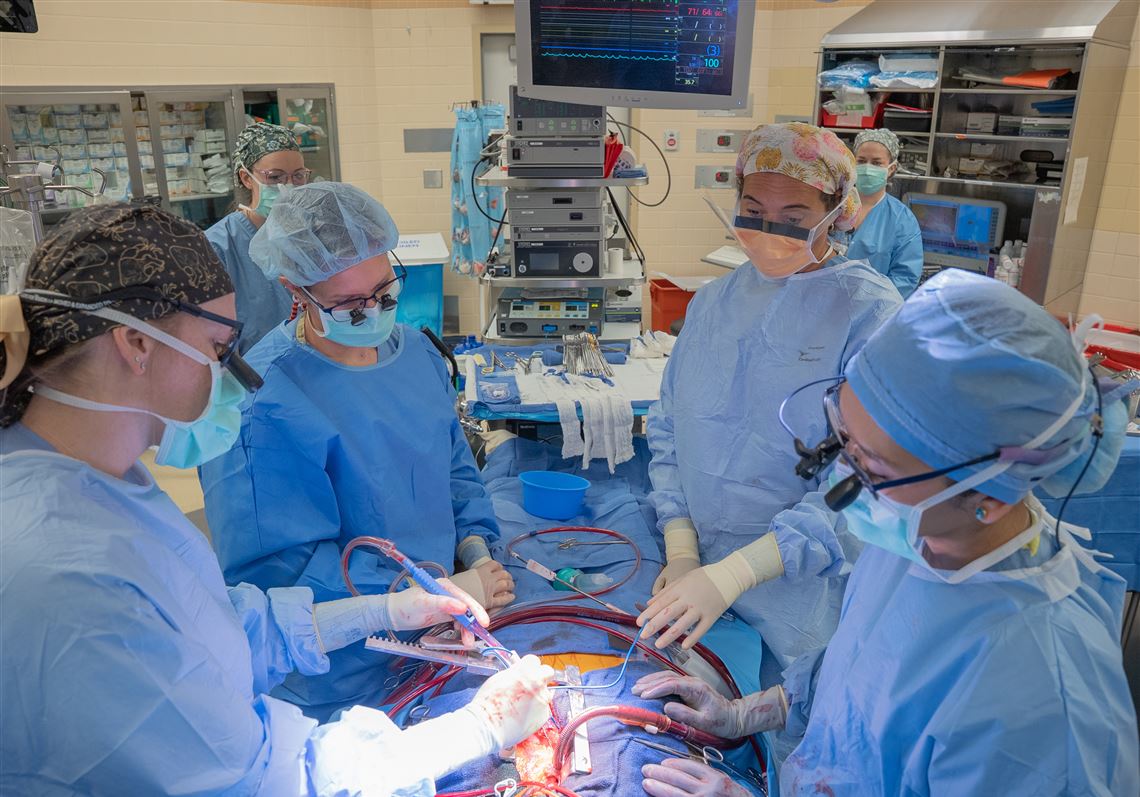A group of women gathered around a patient with blocked arteries from heart disease. They anesthetized, sliced open the patient’s chest, temporarily stopped the heart, attached a healthy blood vessel to bypass the blocked artery, and restarted the heart — a five-hour coronary artery bypass graft operation performed entirely by women.
The team, which performed the surgery Monday at Allegheny General Hospital, helped to draw attention to gender representation in medicine just a couple of days after International Women’s Day, on March 8. The procedure spotlighted the growing — but still small — number of women in numerous medical specialties.
At the medical school level, women now make up a majority of applicants (57%) and graduates (52%) — up from 47% of medical school applicants and 43% of medical school graduates in 2001. And in some specialties, such as obstetrics/gynecology and pediatrics, the majority of doctors are now women.
But other specialities are still almost entirely male.
Just 6.6% of orthopedic surgeons and 10% of thoracic surgeons are women. Cardiothoracic surgeons, which is a subset of thoracic surgeons, are even less likely to be women, with some estimates around 5%.
Among that estimated 5% is Candice Lee, who has worked as a cardiothoracic surgeon at AGH since 2020. Cardiothoracic surgery fellow Whitney Taylor participated in Monday’s procedure as well, along with a female perfusionist, anesthesiologist, nurse anesthetist, surgical advanced practice provider, surgical technologist and circulating nurse.
Lee went to medical school at Drexel University and did a rotation at Allegheny General, where she decided that she wanted to become a cardiothoracic surgeon even though she wasn’t aware of many women in the profession. She was encouraged to do so by George McGovern Jr., former chief of thoracic and cardiovascular surgery at the North Side hospital.
“I didn’t really see it as a barrier — I just had a goal in mind,” she said. “The other big thing is to have mentors, whether they be female or male, that really support you. I was lucky to have strong male mentors that supported me and really encouraged me to go into the field.”
Now, Lee is returning the favor to upcoming surgeons such as Taylor, who will graduate from the fellowship program in a few months.
“I didn’t know any female cardiothoracic surgeons until I came to Pittsburgh a couple of years ago,” said Taylor. “In surgery in general, women don’t date back that far, but especially in cardiothoracic.”
Not only does cardiothoracic surgery have an extensive training period — often six to eight years of a residency program following four years of medical school — but the speciality also has long and intense surgical procedures in a high-stakes environment.
Despite the structural challenges, the health care field needs to look for ways to make the field more attractive to women, said Stephen Bailey, chair of AHN’s department of thoracic and cardiovascular surgery.
“We can’t take away the long days or the high-stress environment, but we can try to meet women where they are and remove other obstacles to them adding their talents and expertise and drive [them] to the cardiovascular arena,” he said. “If we weren’t encouraging women to be in the surgical workplace, we’d be missing half of the phenomenal, talented people who could be contributing to the field and moving it forward.”
In a room above the surgery, a class of almost-all female students interested in medicine from Avonworth High School watched the procedure through an observation window as part of the AGH’s Open Heart Surgery Observation Program.
Lee spoke to the students at the beginning of the operation, letting them know details of the medical procedure and giving them some background about the training required to become a surgeon.
At times during the surgery, the high school girls waved through the observation window to the women performing the surgery, and on occasion those in the operating room waved back.
“It’s excellent for them to see,” said Taylor. “Cardiothoracic surgery is still a male-dominated field, primarily, but that tide is changing. I think it’s good for young girls and people in general to see that we’re starting to change the narrative on cardiothoracic surgery.”
First Published: March 15, 2025, 9:30 a.m.
Updated: March 17, 2025, 1:12 p.m.


















